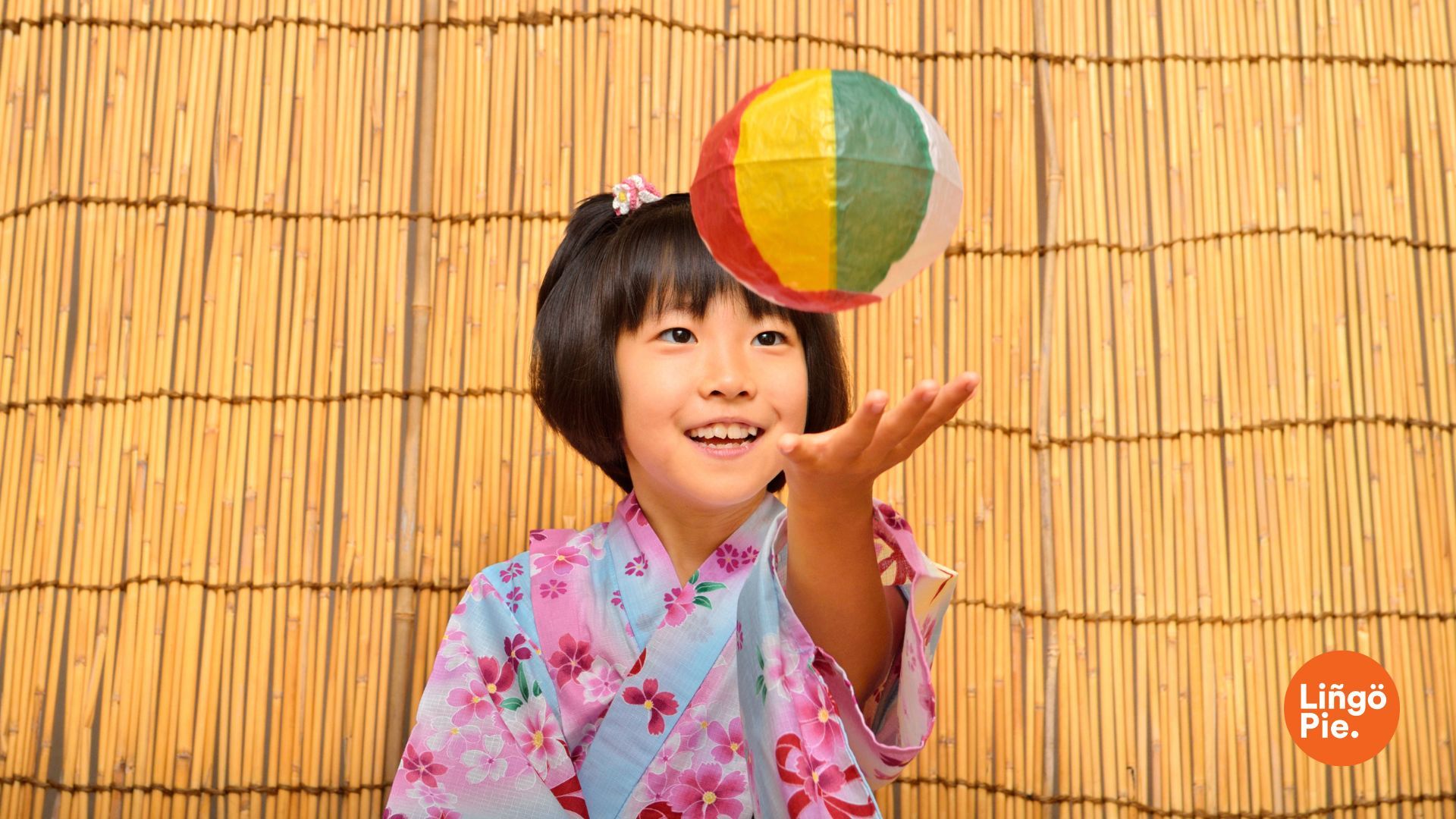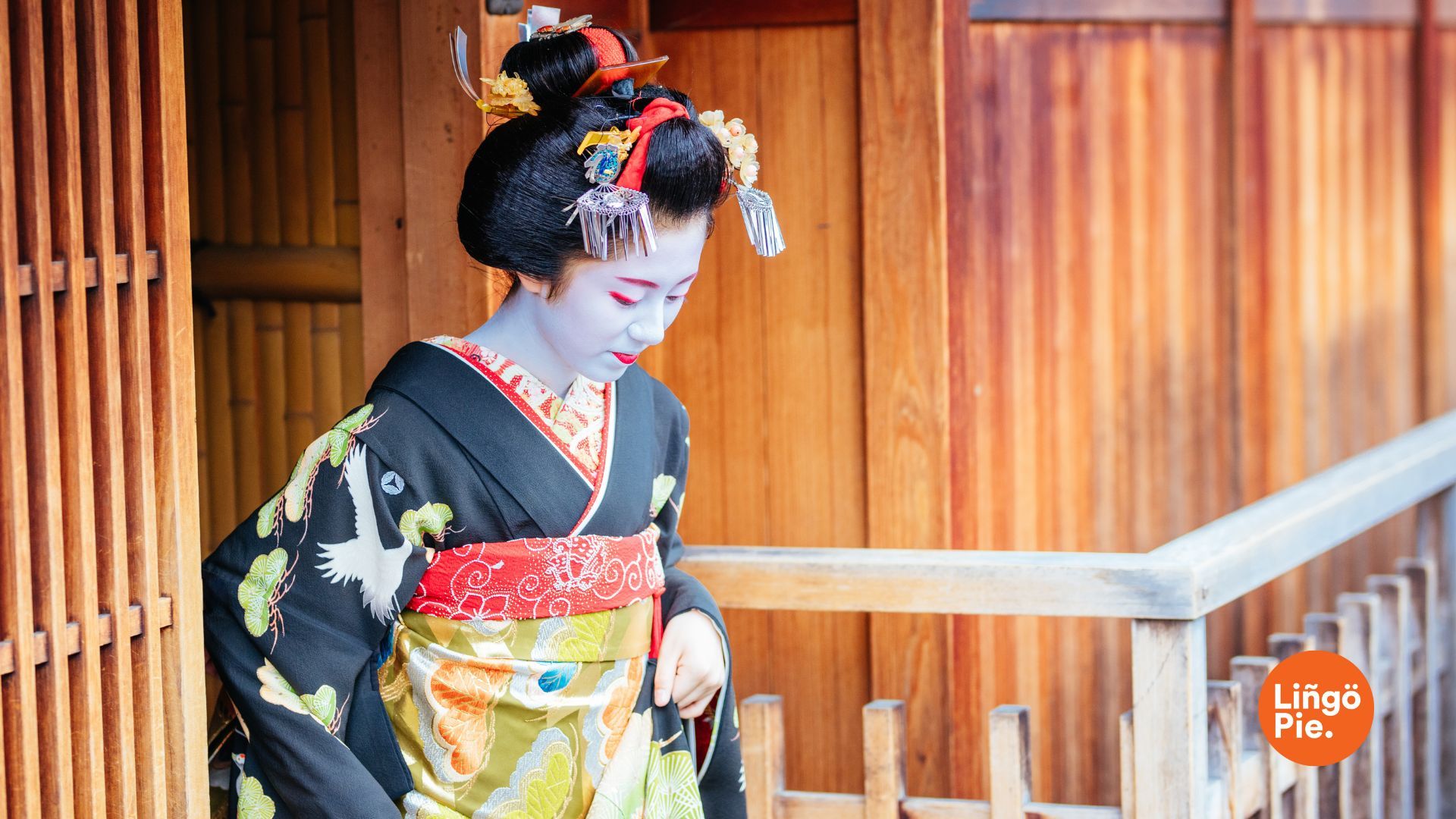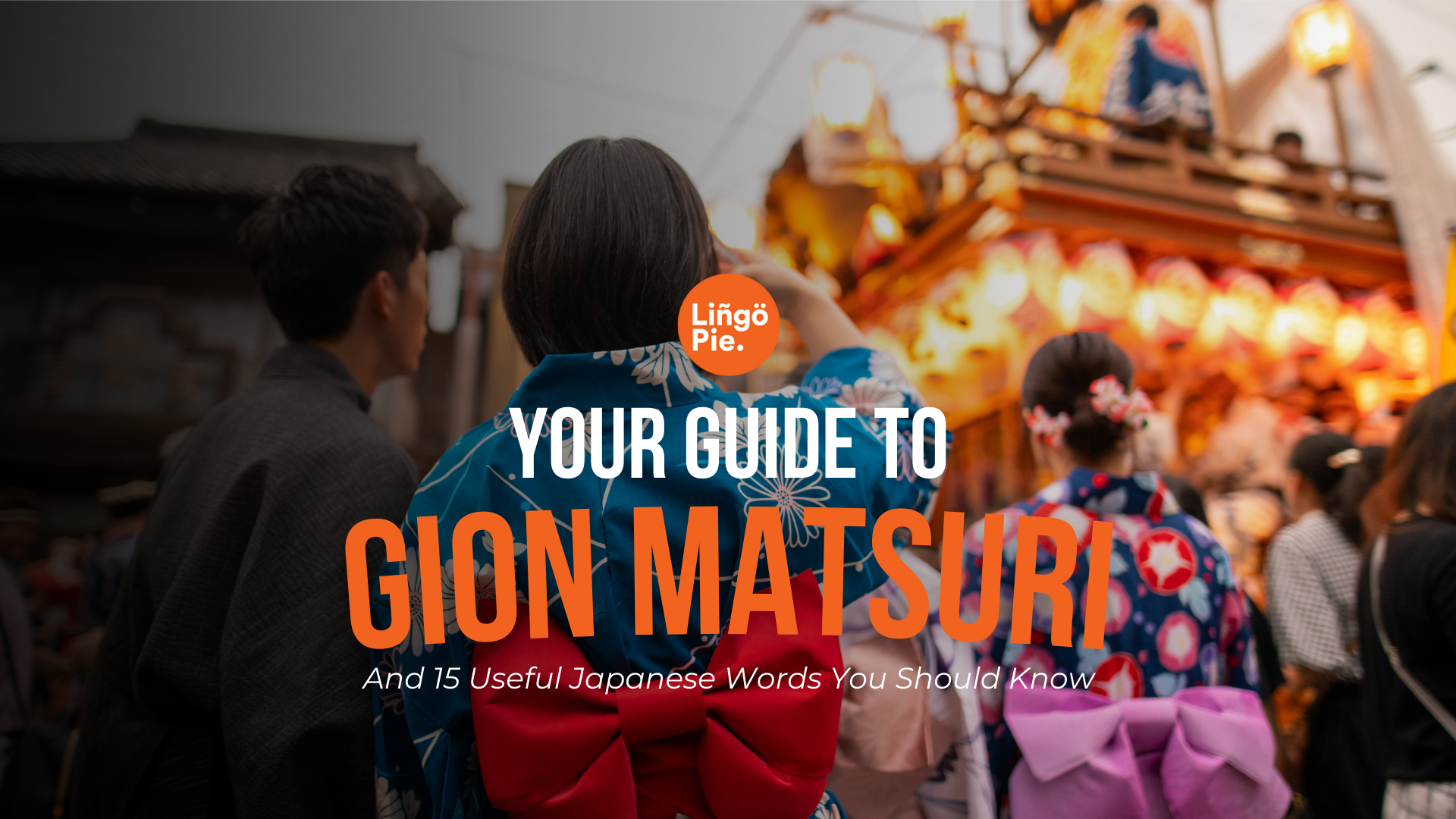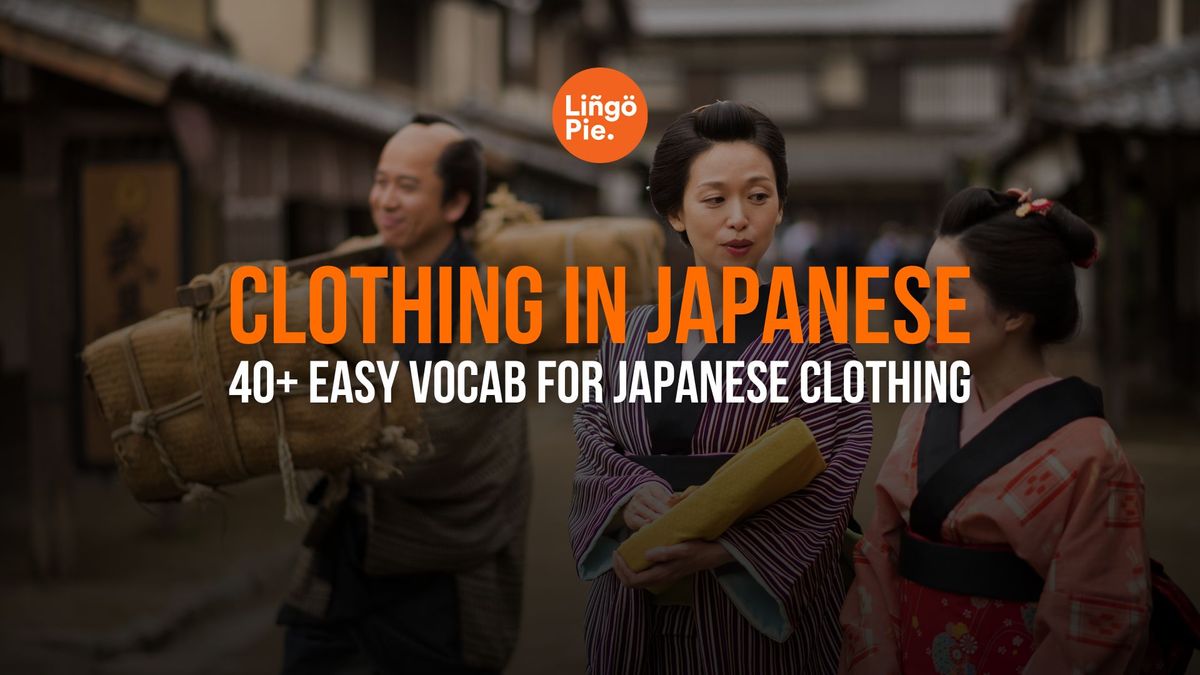For a whole year, I lived right next to Asakusa station in Tokyo. Every day, I'd step out of my apartment and see the most amazing mix of clothing. One minute, I'd spot a group of friends in beautiful yukatas heading to the nearby Senso-ji Temple. The next, I'd see tourists hunting for cool Japanese t-shirts on Nakamise-dori Street. It was like watching a daily fashion show that blended old and new Japan.
Living there, I realized how important clothes are in Japanese culture. They're not just about covering up or looking good - they tell stories about tradition, show off new trends, and let people express themselves.
If you're planning a trip to Japan, trying to learn the language, or just curious about Japanese style, knowing about clothing in Japanese is super helpful. So in this post, I rounded up everything I know to help you learn all the Japanese vocabulary related to traditional clothes and modern ones.
By the time we're done, you'll have enough Japanese clothing words to chat about fashion, go shopping, and blend in like a local.

What Makes Japanese Clothes Unique
In Japanese, "clothes" is translated as 服 (fuku). Even when watching Japanese movies and TV shows, we cannot deny that Japanese clothes stand out for their unique blend of tradition and modernity, attention to detail, and cultural significance. From the intricate designs of traditional wear to the bold statements of modern fashion, Japanese clothing reflects the country's rich history and innovative spirit.
Here's what makes Japanese clothes special:
- Seamless mix of old and new styles
- Intricate designs, especially in traditional garments like 着物 (kimono)
- Strong connection to seasons (e.g., 浴衣 yukata for summer)
- Practical yet stylish designs (like 学生服 gakuseifuku - school uniforms)
- Unique fashion subcultures (原宿ファッション Harajuku fashion, ロリータファッション Lolita fashion)
- Deep respect for traditional clothing in modern times
- High-quality materials and excellent craftsmanship
12 Zodiac Signs In Japanese: How To Talk About Horoscopes
16+ Crazy Japanese Curse Words And Expressions (With Context)
18 Inspirational Japanese Quotes And Their Meanings
Japanese Traditional Clothing
When you think of Japanese fashion, traditional garments like the kimono might be the first thing that comes to mind. And you'd be right - these classic pieces are an integral part of Japan's cultural heritage. But there's so much more to traditional Japanese clothing than just the kimono.
From formal wear to comfortable everyday attire, Japan's traditional garments are as diverse as they are beautiful. Let's explore some of the most iconic pieces of traditional Japanese clothing below!
Kimono – 着物
The kimono is a full-length robe that wraps around the body, creating a straight, elegant silhouette. This traditional clothing comes in a variety of colors and patterns, each with its own meaning. For instance, bright colors and elaborate designs are often worn by younger women, while subtle patterns and muted tones are preferred by older individuals.
If you ever rented one during your trip to Japan, then you'll know that putting on a kimono is an art in itself. It requires several steps and often the help of another person. The robe is secured with a wide sash called an obi (帯), which is tied intricately at the back.
Haori & Hakama – 羽織と袴
The haori is a jacket-like garment worn over a kimono. It typically reaches the hips or mid-thigh and is left open in the front. Originally a men's garment, it was adopted by Japanese women in the late 19th century. Haori often features beautiful designs on the lining, adding an element of surprise when the wearer moves.
Hakama, on the other hand, are pleated trousers or a skirt-like garment. They're tied at the waist and fall to about ankle length. Wearing Hakama was traditionally meant for men but is now also used by both genders. You'll often see them worn during martial arts practice or wedding ceremonies. They add a sense of formality and dignity to the wearer's appearance.
Happi & Hanten – 法被と半纏
Happi are short, straight-sleeved coats traditionally worn by shopkeepers and festival participants. They often feature bold designs or shop logos on the back. Today, you might see groups wearing matching happi during local festivals, creating a sense of unity and celebration. These lightweight coats are comfortable and easy to move in, making them perfect for energetic festival activities.
Hanten, similar to happi, are padded short coats worn for warmth. They were originally workwear for firefighters and laborers. Now, hanten are popular as casual winter wear, especially at home. Their simple design and cozy padding make them a practical choice for chilly evenings. Some families even have custom hanten made with their family crest, turning them into cherished heirlooms.

Yukata (浴衣)
Yukata are casual summer kimonos made from light cotton. Originally worn after bathing at hot springs, they've become popular as comfortable festival wear. Yukata are easier to put on than formal kimonos and come in a variety of colorful patterns. You'll often see people wearing yukata at summer festivals, fireworks displays, or just strolling around town on warm evenings.
Samue (作務衣)
Samue are work clothes traditionally worn by Buddhist monks. They consist of a loose-fitting top and pants, usually made from sturdy, breathable fabric. The simplicity of samue allows for easy movement, making them ideal for physical work or meditation.
In recent years, samue have gained popularity as comfortable loungewear among the general public. They're often worn at home or for light outdoor activities. Some people even wear them as pajamas.
Nagajuban (長襦袢)
Nagajuban is an undergarment worn beneath a kimono. It's a full-length robe that helps to keep the kimono clean and adds an extra layer of warmth. The collar of the nagajuban is visible at the neckline of the kimono, adding a subtle contrast. While most of the nagajuban is made from simple fabric, the visible collar is often made of silk or decorated with intricate patterns.
Maekake (前掛)
Maekake is a traditional waist apron worn by craftsmen and shopkeepers. It's typically made of sturdy, indigo-dyed cotton and features the wearer's shop name or logo. Originally, maekake served a practical purpose, protecting clothing from dirt and wear during work. Today, they're also seen as a symbol of pride in one's trade or business.
Jinbei (甚平)
Jinbei are casual summer outfits consisting of a short-sleeved top and matching shorts. Originally worn as pajamas or housewear, they've become popular as everyday summer clothing, especially for children and men. Jinbei are usually made from light, breathable fabrics like cotton or hemp, making them perfect for hot, humid Japanese summers.
Tanzen (丹前)
Tanzen is a padded kimono-style coat worn for warmth during colder months. It's similar to a hanten but longer, often reaching the knees or ankles. Tanzen are typically made from cotton or silk and filled with light padding, providing insulation without being too heavy. They're designed to be worn over regular clothing or sleepwear.
Michiyuki (道行)
Michiyuki is a coat-like garment worn over a kimono, primarily by women. It's designed for protection against rain and dust while traveling. The michiyuki typically reaches mid-calf and has a simple, straight cut with a overlapping front that's secured with ties. Unlike many other traditional garments, michiyuki often feature subdued colors and patterns.
While less common today due to the prevalence of Western-style outerwear, michiyuki are still worn by some women when dressing in full kimono for formal occasions. They add an extra layer of elegance to the outfit while serving a practical purpose. Some modern fashion designers have drawn inspiration from michiyuki, creating contemporary coats with similar silhouettes.
Fundoshi (褌)
Fundoshi is a traditional Japanese loincloth worn by men. It's made from a single strip of cloth, usually cotton, that's wrapped around the waist and between the legs. While it might seem simple, there are actually several different ways to tie a fundoshi, each with its own name and purpose.
In modern Japan, fundoshi are rarely worn as everyday underwear. However, they remain an important part of certain cultural events. For example, participants in some traditional festivals wear fundoshi, often with little else. Sumo wrestlers also wear a type of fundoshi called mawashi during matches.


Basic Japanese Clothing Vocabulary
Now that we've explored traditional Japanese garments, let's dive into some essential clothing vocabulary that'll come in handy whether you're shopping in Tokyo or describing your outfit to a Japanese friend. Don't worry if it seems like a lot at first – we'll break it down into easy-to-digest chunks. So, let's get started on building your Japanese fashion vocabulary!
Japanese Words For Clothes
Whether you're browsing trendy boutiques in Harajuku or shopping for basics in a thrift store, knowing these general clothing terms will help you navigate the Japanese fashion scene with confidence.
| Japanese | Romaji | English |
|---|---|---|
| Tシャツ | tii shatsu | T-shirt |
| ズボン | zubon | pants |
| スカート | sukaato | skirt |
| ドレス | doresu | dress |
| ジャケット | jaketto | jacket |
| コート | kooto | coat |
| セーター | seetaa | sweater |
| シャツ | shatsu | shirt |
| ブラウス | burausu | blouse |
| ジーンズ | jiinzu | jeans |
| 靴下 | kutsushita | socks |
| 靴 | kutsu | shoes |
| 帽子 | boushi | hat |
Japanese Vocabulary For Footwear
Footwear in Japanese fashion is an interesting blend of traditional and modern styles. While you might see traditional geta (wooden sandals) or zori (flat sandals) at festivals or worn with yukata, everyday footwear in Japan is quite similar to what you'd find in other developed countries.
However, there are some unique aspects to Japanese shoe culture, such as the strict indoor/outdoor shoe separation. Let's look at some common modern footwear terms you'll encounter in Japan:
| Japanese | Romaji | English |
|---|---|---|
| スニーカー | suniikaa | sneakers |
| サンダル | sandaru | sandals |
| ブーツ | buutsu | boots |
| ハイヒール | hai hiiru | high heels |
| ローファー | roofaa | loafers |
| パンプス | panpusu | pumps |
| スリッパ | surippa | slippers |
| ビーチサンダル | biichi sandaru | flip-flops |
| 運動靴 | undou gutsu | athletic shoes |
| レインブーツ | rein buutsu | rain boots |
| バレエシューズ | baree shuuzu | ballet flats |
| 上履き | uwabaki | indoor shoes (often used in schools) |
Japanese Vocabulary For Accessories
Japanese accessories have a rich history, from the elaborate kanzashi hair ornaments worn with kimono to the practical inro cases carried by samurai. While these traditional accessories are still used for special occasions, modern Japanese fashion incorporates a wide range of contemporary accessories.
| Japanese | Romaji | English |
|---|---|---|
| ネックレス | nekkuresu | necklace |
| イヤリング | iyaringu | earrings |
| ブレスレット | buresuretto | bracelet |
| 指輪 | yubiwa | ring |
| 時計 | tokei | watch |
| サングラス | sangurasu | sunglasses |
| スカーフ | sukaafu | scarf |
| ベルト | beruto | belt |
| バッグ | baggu | bag |
| 財布 | saifu | wallet |
| 傘 | kasa | umbrella |
| ヘアピン | heapin | hair pin |
| キーホルダー | kii horudaa | keychain |

Japanese Phrases For Shopping in Japan
Fans of Japanese anime might recognize some of these phrases from shopping scenes in their favorite shows - remember Naruto's enthusiasm when buying ramen, or the intense bargaining in "The Way of the Househusband"? Now it's your turn to use these phrases in real life!
| Japanese | Romaji | English |
|---|---|---|
| いくらですか? | Ikura desu ka? | How much is it? |
| これをください。 | Kore wo kudasai. | I'll take this, please. |
| 試着できますか? | Shichaku dekimasu ka? | Can I try it on? |
| サイズが合いません。 | Saizu ga aimasen. | The size doesn't fit. |
| 他の色はありますか? | Hoka no iro wa arimasu ka? | Do you have this in other colors? |
| クレジットカードは使えますか? | Kurejitto kaado wa tsukaemasu ka? | Can I use a credit card? |
| 割引はありますか? | Waribiki wa arimasu ka? | Is there a discount? |
| 返品できますか? | Henpin dekimasu ka? | Can I return this? |
| 袋をください。 | Fukuro wo kudasai. | Can I have a bag, please? |
| おつりです。 | Otsuri desu. | Here's your change. |
| ありがとうございました。 | Arigatou gozaimashita. | Thank you very much. |
When shopping for clothes in Japan, you might need to ask about sizes. Here's how you can do it:
- "〇〇号はありますか?" (XX-gou wa arimasu ka?) - "Do you have size XX?" Replace XX with the Japanese size number. For example, "M サイズはありますか?" (M saizu wa arimasu ka?) for "Do you have size M?"
- "もっと大きいサイズはありますか?" (Motto ookii saizu wa arimasu ka?) - "Do you have a larger size?"
- "もっと小さいサイズはありますか?" (Motto chiisai saizu wa arimasu ka?) - "Do you have a smaller size?"
To ask about colors, you can use this general structure:
"〇〇色はありますか?" (XX-iro wa arimasu ka?) - "Do you have it in XX color?"
Replace XX with the color you're looking for. For example:
- "赤色はありますか?" (Aka-iro wa arimasu ka?) - "Do you have it in red?"
- "青色はありますか?" (Ao-iro wa arimasu ka?) - "Do you have it in blue?"
If you're not sure of the color name, you can point to a color and ask: "この色はありますか?" (Kono iro wa arimasu ka?) - "Do you have this color?"
Remember, practice makes perfect. Don't be afraid to try out these phrases when shopping in Japan!

Learn Japanese With Lingopie
Ready to take your Japanese fashion knowledge from the page to the streets of Tokyo? Learning these words and phrases is just the beginning of your journey into the colorful world of Japanese culture and style.
But let's face it - memorizing lists can only get you so far. The real magic happens when you hear these words in action, spoken by native Japanese speakers in everyday situations.
That's where Lingopie's features can help!
Imagine watching a trendy Japanese drama where the characters are shopping in Harajuku, or a comedy skit set in a bustling department store. Suddenly, those phrases you've learned come alive!
You'll find yourself chuckling at fashion-related jokes and nodding along as characters debate over sizes and colors. Before you know it, you'll be dreaming in Japanese and planning your next shopping spree in Shibuya.
So why wait? Check into Lingopie's world of Japanese content and turn your fashion vocabulary from textbook boring to real-world fluent!









![6 Best Japanese Translation Apps For Learners [TESTED]](/blog/content/images/size/w300/2026/01/Best-Japanese-Translation-Apps.jpg)
![6 Best Japanese Language Apps Worth Trying [TESTED]](/blog/content/images/size/w300/2025/12/best-apps-to-Learn-Japanese.jpeg)